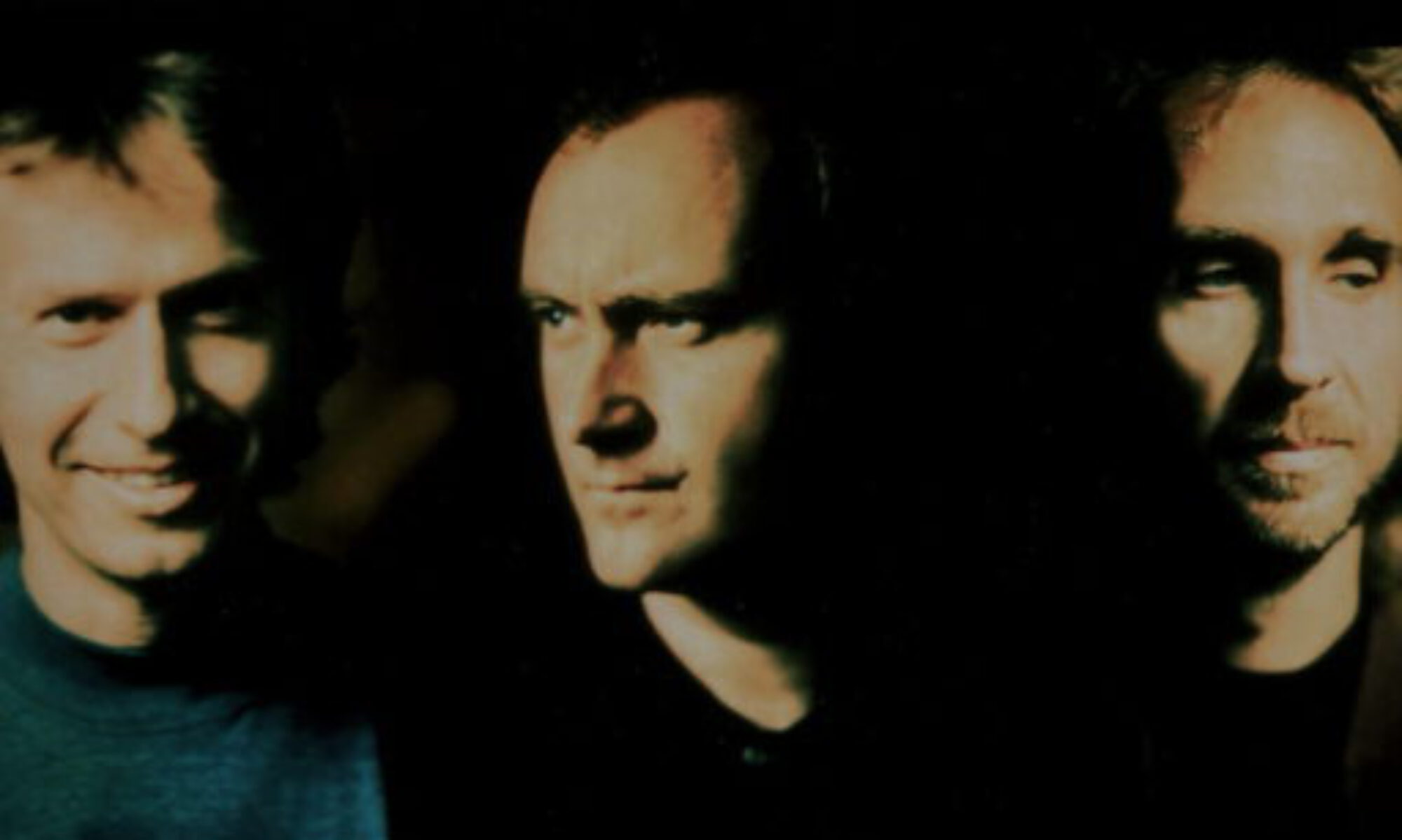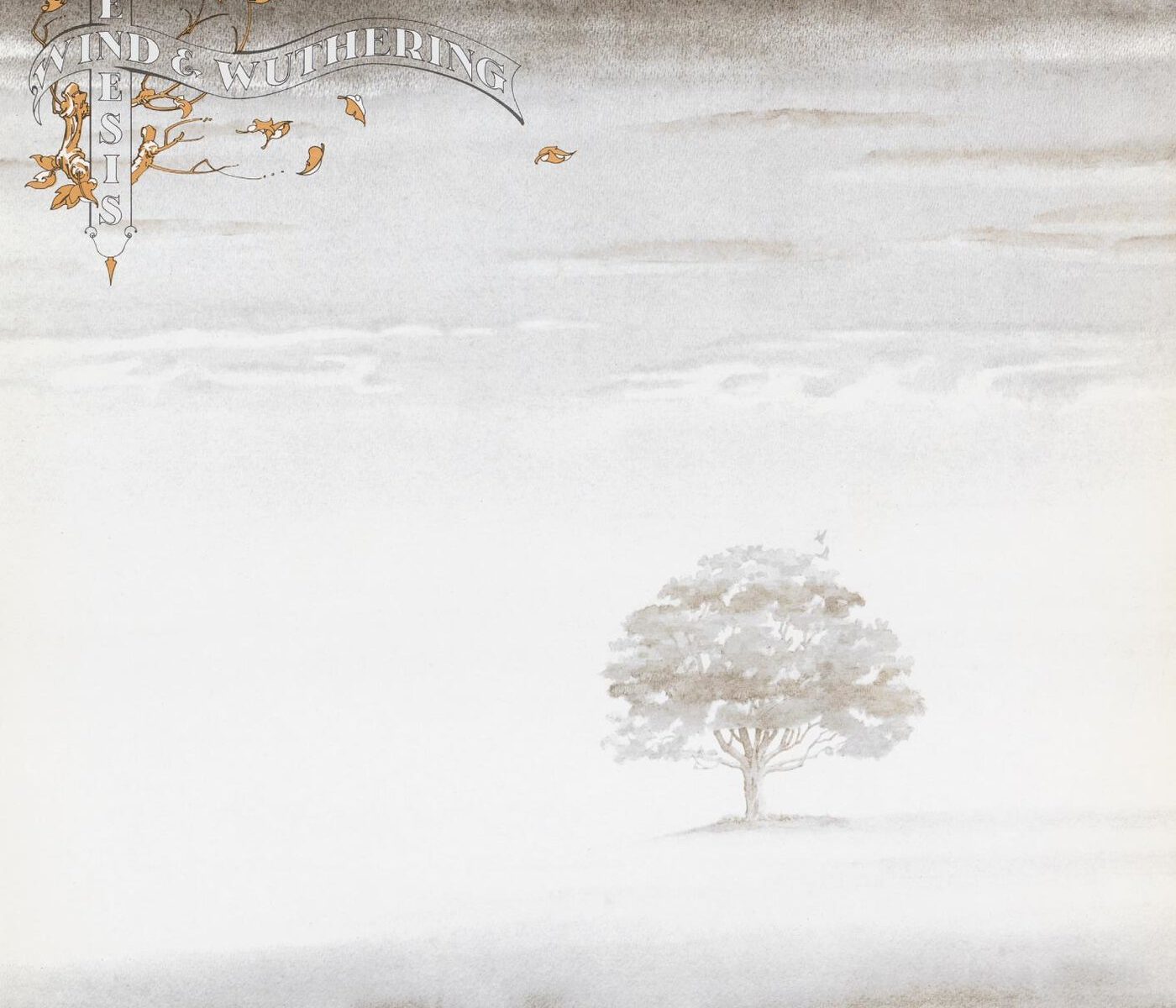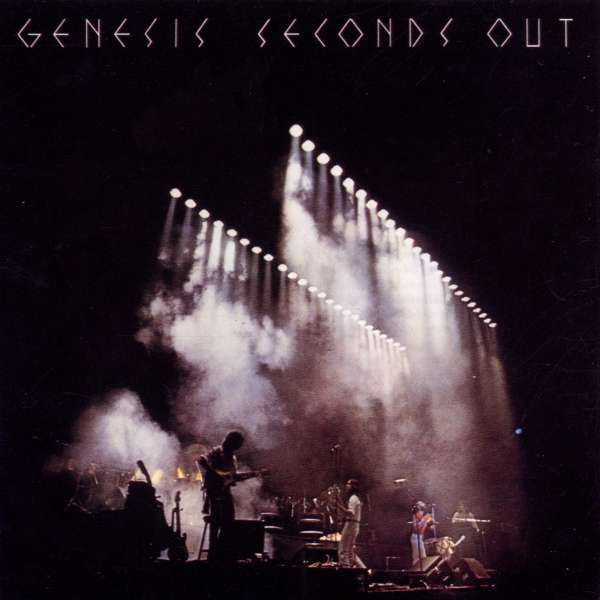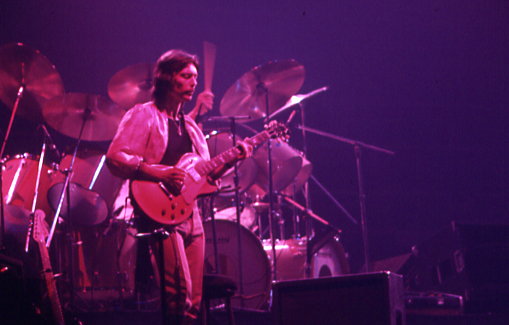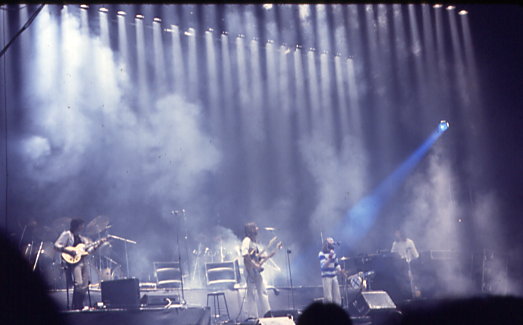Released between December 1976 and January 1977, Wind & Wuthering marked the end of an era for Genesis. It was the last album to feature Steve Hackett before his departure, and it stands as one of the band’s most progressive works, balancing complex storytelling, instrumental prowess, and early hints of their later pop-oriented direction.
Continue reading “Wind & Wuthering (1976) – Genesis”Seconds Out (1977) – Genesis
Genesis released their double live album Seconds Out in October 1977, capturing the band’s performance during the Wind & Wuthering tour. Recorded mainly at the Palais des Sports in Paris in June 1977, with one track from the Pavillon de Paris in June 1976, the album showcases Genesis at a pivotal moment in their evolution.
Continue reading “Seconds Out (1977) – Genesis”Steve Hackett’s Last Show with Genesis
On July 3, 1977, Genesis played the final show of their Wind & Wuthering tour, unaware that it would also be Steve Hackett’s last performance with the band.
Wind & Wuthering and Growing Tensions
Released in December 1976, Wind & Wuthering was Genesis’s second album following Peter Gabriel’s departure. With Phil Collins now stepping confidently into the role of lead vocalist, the band had successfully reinvented itself as a four-piece. Collins had already proven he could carry the frontman role with A Trick of the Tail and the subsequent 1976 tour.
By this point, songwriting duties were largely shared between Tony Banks and Mike Rutherford, while Phil focused more on arrangements and performance. Steve Hackett, however, was growing increasingly frustrated. He felt that his musical ideas were often overlooked, and after the 1977 tour, he made the decision to leave Genesis.
The Wind & Wuthering Tour
The 1977 tour was one of Genesis’s biggest yet, taking them across Europe, the US, and for the first time, South America. They were joined by American drummer Chester Thompson, who would become a fixture in the live lineup for decades.
That year, the band reached new heights in live performance and was even voted “Best Live Group” in 1977. Much of that era’s power was captured on the double live album Seconds Out.
The Final Show: July 3, 1977, Munich
Genesis closed out the tour with a concert at Munich’s Olympiahalle. They opened with Squonk, followed by One for the Vine, a Tony Banks epic from the new album. The rare track Inside and Out from the Spot the Pigeon EP was also included, having appeared on select European dates.
Highlights of the show included The Carpet Crawlers, I Know What I Like, and Supper’s Ready, songs that had evolved significantly since Gabriel’s departure. The band had also begun experimenting with medleys, a trend that continued on this tour: Dance on a Volcano merged seamlessly into Los Endos, while The Lamb Lies Down on Broadway was paired with the climactic ending of The Musical Box.
And of course, Firth of Fifth made the setlist, featuring Hackett’s iconic guitar solo. None of the fans, or even the band members, knew it would be the last time they’d see Steve Hackett perform it live with Genesis.
Steve Hackett’s Departure
Steve had already released a solo album by this point, showcasing ideas that had not made it onto Genesis records. During the four-piece era, he had pushed for a guaranteed portion of writing credits on each album, a request the others declined, committed as they were to being a fully democratic group.
In July 1977, while mixing Seconds Out, Hackett found himself exhausted by the constant repetition of songs like I Know What I Like. After months on the road and in front of crowds of 20,000 people, he began to feel creatively stifled. The challenge was gone.
So one day, he picked up the phone and called Mike Rutherford to say he was leaving. Mike, aware of Steve’s growing dissatisfaction, did not try to change his mind.
Shortly afterward, Phil Collins happened to drive past Steve near Trident Studios, where they were mixing the album. Phil invited him into the car, but Steve acted strangely, saying only, “Talk to Mike, he’ll explain,” before walking away. When Phil arrived at the studio, Mike and Tony told him Steve had officially left the band.
The Band Carries On
Genesis continued mixing Seconds Out as a trio, then returned to the studio to begin work on their next album. From this point forward, Genesis would remain a three-piece studio band, while Steve Hackett would embark on a successful solo career.
Title photo: Genesis Steve Hackett. Source: Wikimedia Commons, Jean-Luc / CC-BY-SA-2.5 (https://creativecommons.org/licenses/by/3.0). Originally posted to Flickr as Genesis.
Genesis Kicks Off the Wind & Wuthering Tour at the Rainbow Theatre on 1 January 1977
On January 1, 1977, Genesis began their highly anticipated Wind & Wuthering tour with a series of three sold-out performances at London’s iconic Rainbow Theatre. These shows marked the beginning of a new chapter for the band, being the first with Chester Thompson as their touring drummer and the last with guitarist Steve Hackett. The stakes were high, and the performances lived up to every expectation, setting the tone for what would become one of the band’s most ambitious tours.
A New Era for Genesis
By the time Genesis took to the stage at the Rainbow, they were riding the wave of their recently released album, Wind & Wuthering. This was their second studio effort since Peter Gabriel’s departure and demonstrated the band’s evolving sound, shaped primarily by Tony Banks and Mike Rutherford. While Phil Collins had already proven himself a formidable frontman on A Trick of the Tail and its subsequent tour, Wind & Wuthering solidified the band’s status as a dominant force in progressive rock.
The Rainbow shows also introduced fans to a new dynamic on stage. Chester Thompson, who had played with Frank Zappa and Weather Report, stepped into the role of live drummer. Despite having just ten days of rehearsals to learn an extensive and complex setlist, Thompson impressed with his technical prowess and adaptability. Though initial reviews were mixed—with some critics finding his style less “exciting” than Bill Bruford’s—his chemistry with Collins and the band grew stronger as the tour progressed.
The Opening Night: 1 January 1977
Genesis opened their first show with “Eleventh Earl of Mar” from the new album, setting the stage with energy and precision. Fans were also treated to other Wind & Wuthering tracks, including the jazzy instrumental “…In That Quiet Earth” and the poignant ballad “Afterglow,” where Collins and Thompson recreated a stunning drum fill inspired by Zappa’s Roxy & Elsewhere. The setlist also revisited classic fan favorites like “Supper’s Ready” and “The Musical Box,” which now had a fresh groove thanks to Thompson’s jazz-rock sensibilities.
The performances weren’t just about the music. Genesis debuted a state-of-the-art stage setup, featuring computer-controlled laser lights and Boeing 747 landing lights, creating a mesmerizing visual spectacle. Despite the rise of punk rock, which critics claimed was overshadowing progressive rock, the demand for Genesis was undeniable—80,000 fans applied for just 8,000 tickets to the Rainbow shows.
Reflections on the Show
Peter Gabriel, who attended the Rainbow performances, reportedly sympathized with Thompson’s challenge of adapting to Genesis’ intricate material on short notice. However, the drummer’s confidence and skill became evident as he added his own flair to the band’s repertoire. Even tracks like “Squonk,” which some felt fell short compared to its studio version, showcased Thompson’s steady hand and growing familiarity with the material.
The new lineup’s energy was palpable. Tony Banks’ epic “One for the Vine” stood shoulder to shoulder with Genesis’ older masterpieces, while lighter moments like “All in a Mouse’s Night” brought humor to the set. The extended version of “I Know What I Like” had the audience grooving, proving that Genesis was still evolving their sound even in live performances.
A Turning Point for Genesis
The three nights at the Rainbow Theatre were a triumphant start to a journey that would take the band across Europe, North America, and South America. It was during this tour that Genesis cemented their reputation as one of the best live acts of the era, a feat recognized when they were voted “Best Live Group” in 1977.
Yet, this tour also marked an ending. Steve Hackett, whose frustrations over his role in the band had been simmering for some time, left after the tour. His departure would transform Genesis into a trio for their subsequent album, …And Then There Were Three…, signaling the end of their progressive rock era and the start of a new phase in their sound.
“Best Live Band” in 1977
The recordings from this tour were later featured on the live album Seconds Out. These concerts captured Genesis at a pivotal moment, balancing the old and the new while navigating internal changes and external pressures. For the fans lucky enough to be there, the Rainbow shows remain legendary—a testament to Genesis’ ability to innovate, adapt, and deliver unforgettable live experiences.
As Chester Thompson would later recall the Rainbow shows: “I remember there was an energy, a buzz unlike anything I felt. It wasn’t a huge venue, but the crowd was really into it. The music for me was again a challenge, because it was just so unfamiliar to me.”1
Indeed, the Rainbow shows of January 1977 were more than just concerts—they were a defining moment in the history of Genesis.
Title photo: Genesis_(the_band). Source: Wikimedia Commons, Jean-Luc / CC-BY-SA-2.5 (https://creativecommons.org/licenses/by/3.0).
Sources
Bowler, Dave; Dray, Bryan (1992): Genesis. A biography. London: Sidgwick & Jackson.
CHESTER THOMPSON FULL INTERVIEW : HOW HE WENT FROM ZAPPA TO DRUMMING WITH GENESIS & PHIL COLLINS.
Frischvers, Richard, ‘Wind & Wuthering’. Circus (31 March 1977), pp. 58–60, https://thegenesisarchive.co.uk/circus-magazine-wind-and-wuthering-feature-31st-march/, archived from the original on 11 October 2015.
Platts, Robin (2007): Genesis. Behind the lines, 1967-2007. Burlington, Ont., Canada: Collectors Guide Pub.
Thompson, Dave (2005): Turn it on again. Peter Gabriel, Phil Collins & Genesis. San Francisco: Backbeat Books.
- CHESTER THOMPSON FULL INTERVIEW : HOW HE WENT FROM ZAPPA TO DRUMMING WITH GENESIS & PHIL COLLINS. ↩︎
